Key takeaways:
- Reflective teaching involves critical analysis of teaching methods, fostering continuous improvement and deeper connections with students.
- Self-assessment, peer collaboration, and integrating student feedback are essential components that enhance teaching effectiveness.
- Structured reflection practices, such as journaling and setting specific questions, provide valuable insights for educators.
- Future goals for reflective teaching include collaborative reflection with colleagues and utilizing technology for self-assessment.
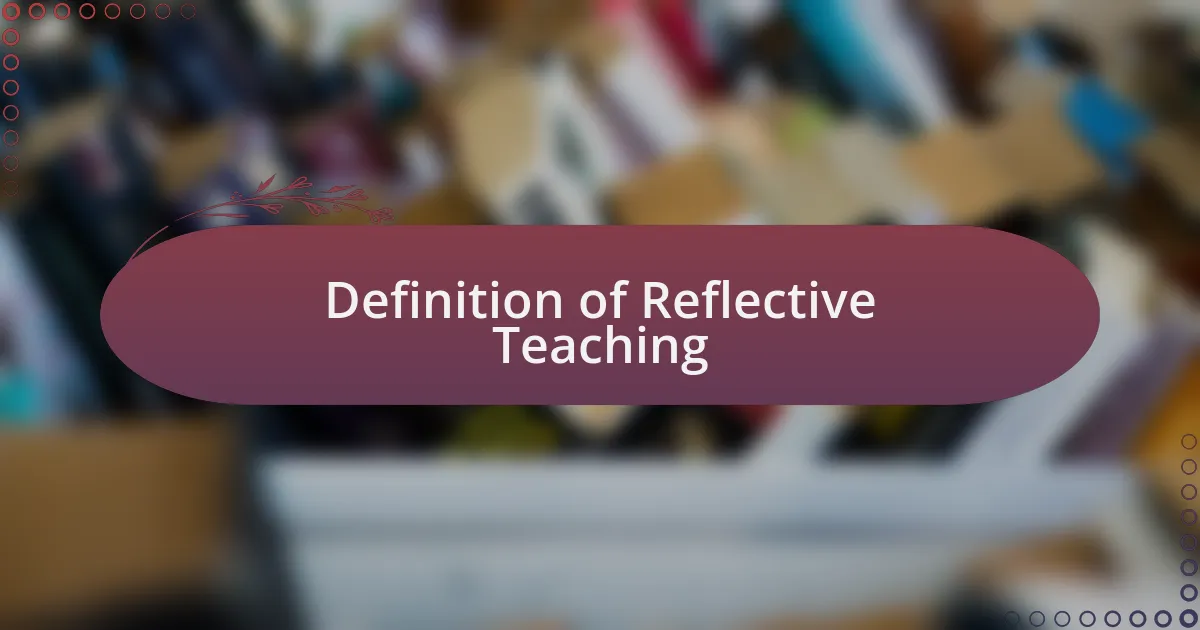
Definition of Reflective Teaching
Reflective teaching is a deliberate practice where educators critically analyze their teaching methods and experiences. It encourages teachers to consider not just what they teach, but how and why they teach it. Isn’t it fascinating how much insight can come from simply pausing to think about our day-to-day interactions with students?
I recall a moment in my early teaching career when I faced a classroom full of disengaged students. I took a step back to reflect on my approach, wondering whether my lessons were truly resonating with them. This introspection guided me to adjust my strategies, and I witnessed a remarkable shift—students became more engaged and eager to learn. Could such small adjustments create such significant impacts in our classrooms? Absolutely.
At its core, reflective teaching is about continuous improvement. It’s an ongoing cycle of planning, teaching, assessing, and refining our methods. This process not only benefits students but also fuels our growth as educators. I often ask myself: what did I learn today, and how can I implement those lessons tomorrow? This kind of reflection fosters a richer teaching environment and cultivates deeper connections with our students.
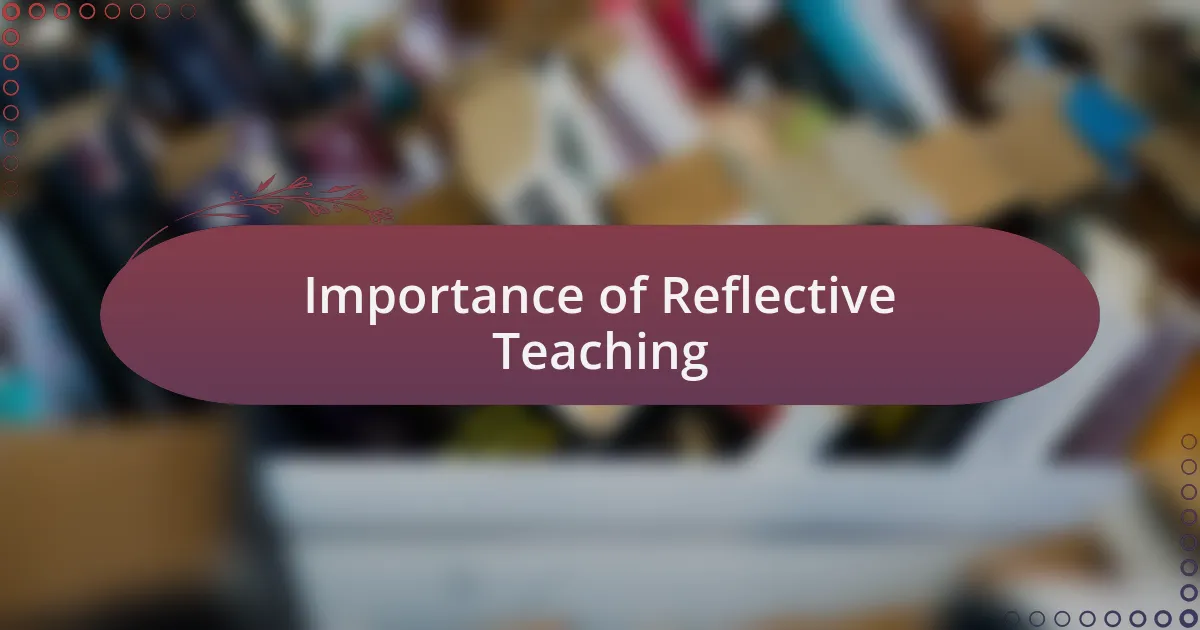
Importance of Reflective Teaching
Reflective teaching is essential because it empowers educators to evolve in their practices. In my experience, after incorporating self-reflection into my routine, I recognized the profound impact it had on my teaching effectiveness. I often think, how can we expect our students to grow if we aren’t willing to grow ourselves?
One particular semester, I noticed that my classroom discussions felt stagnant. Instead of accepting this as the norm, I took a moment to analyze my approach. I asked myself, had I truly created a space where every voice mattered? By actively soliciting student feedback and adjusting my methods, I not only reignited their enthusiasm for learning but also deepened my understanding of their needs.
The beauty of reflective teaching lies in its transformative power. It encourages us to be not just instructors, but lifelong learners. Ultimately, isn’t it our responsibility to model the very behaviors we want our students to embrace? The journey of reflection often reveals insights that inspire both personal growth and a vibrant classroom atmosphere.
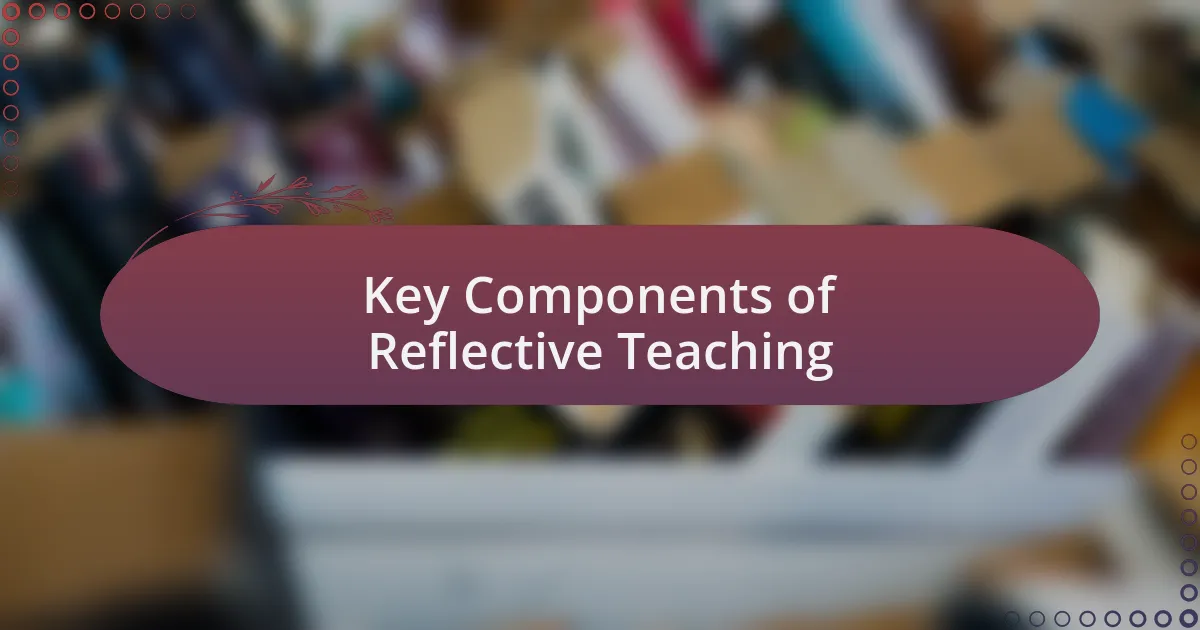
Key Components of Reflective Teaching
Key Components of Reflective Teaching
One of the foundational elements of reflective teaching is self-assessment. I remember a time when I recorded one of my classes to objectively evaluate my interaction with students. Reflecting on that recording not only highlighted my strengths but also illuminated areas for improvement that I hadn’t been aware of before. How often do we really take a step back and look at ourselves through a different lens?
Another important aspect is peer collaboration, which I have found invaluable. I once participated in a professional learning community where we shared classroom experiences and offered feedback to one another. The insights gained from my colleagues sparked innovative ideas in my teaching. It made me think, if we’re all in this together, why not learn from one another?
Lastly, integrating student feedback is crucial in this process. I’ve made it a habit to collect anonymous surveys from my students after each unit. The raw honesty in their comments often surprises me, revealing their true feelings about my teaching. Isn’t it fascinating how our students can guide us towards the improvements that benefit not only them but also our overall teaching effectiveness?
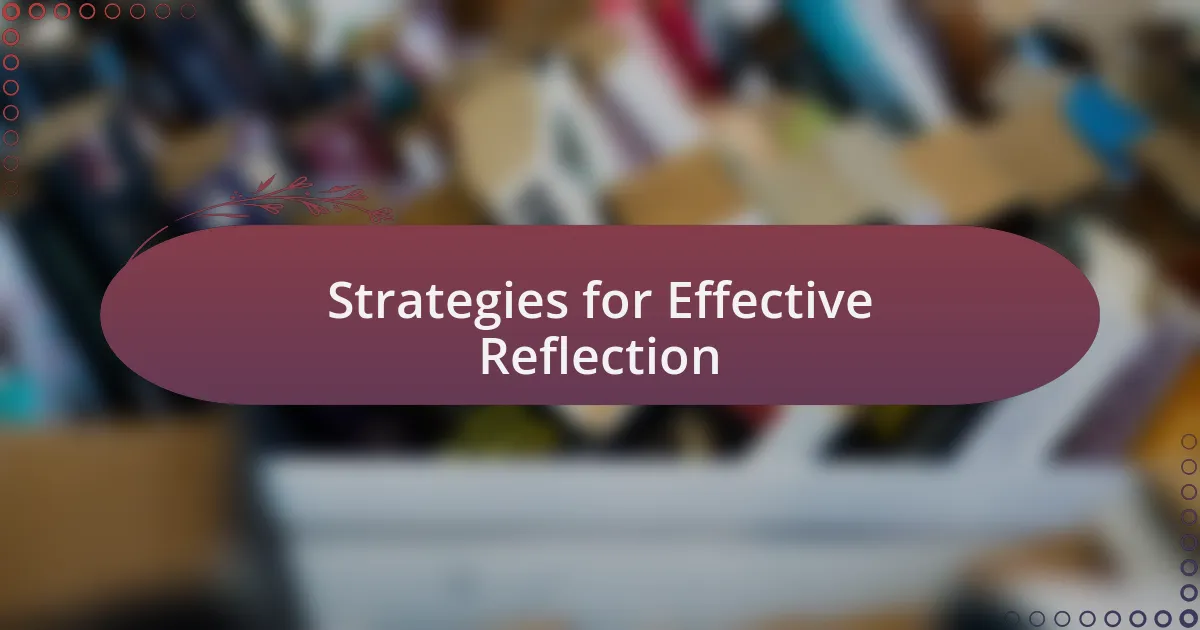
Strategies for Effective Reflection
Engaging in a structured reflection process can significantly enhance your teaching practice. I often designate time after each lesson to jot down my thoughts in a journal. This practice allows me to capture immediate impressions, which would be lost if I waited too long. Isn’t it amazing how those fleeting moments can lead to profound insights?
Another strategy I’ve found effective is setting specific reflection questions. When I ponder, “What was one moment today that challenged me?”, I often uncover deeper meanings in my experiences. Once, a heated discussion in class led me to realize how easy it is to steer the conversation and potentially stifle student voices. That specific focus transformed my approach to classroom dialogue entirely.
Moreover, I encourage you to seek external perspectives. After giving a presentation, I once invited a mentor to observe and provide feedback. The suggestions I received opened my eyes to aspects of my teaching style that I hadn’t considered. What a refreshing reminder that sometimes we need a friend to help us see things we miss ourselves!
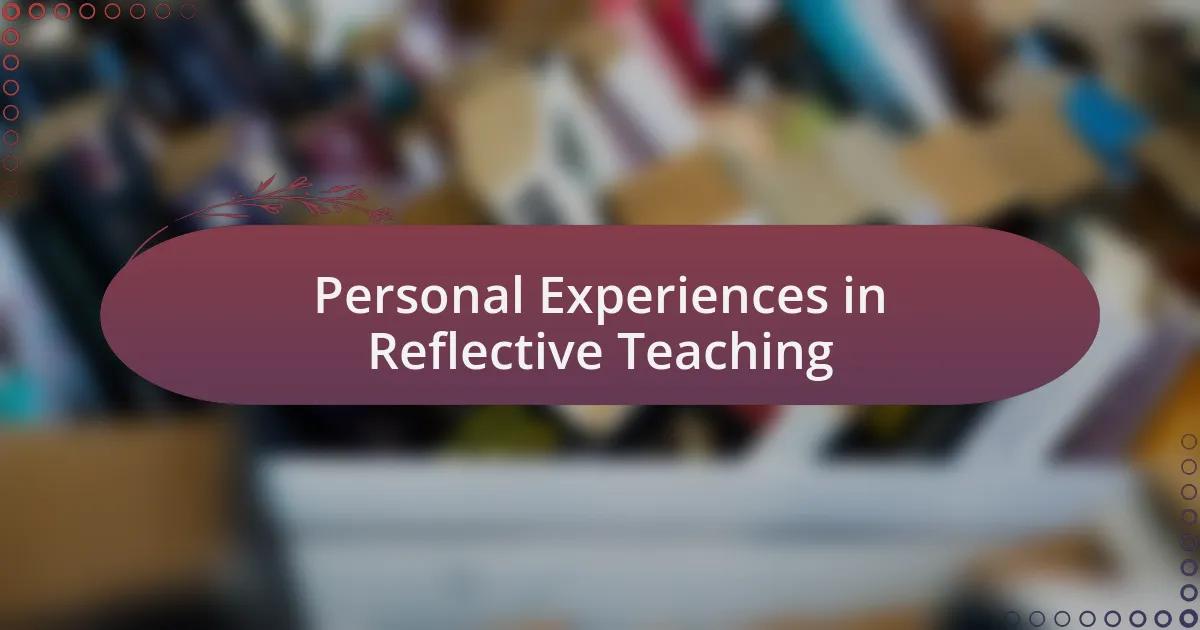
Personal Experiences in Reflective Teaching
Reflective teaching has undeniably shaped my approach in unexpected ways. I recall a time when a particularly challenging class left me feeling defeated. After reflecting on it, I realized my frustration stemmed from my expectations rather than the students’ abilities. This breakthrough shifted my mindset, allowing me to embrace errors as part of the learning process. Have you ever had a moment where a difficult experience led to such clarity?
Another experience that stands out was during a group project I facilitated. I noticed one student struggling to engage, which initially frustrated me. Reflecting on why, I asked myself, “What am I doing or not doing that affects them?” This reflection led me to include differentiated roles in the project, and I watched as their confidence blossomed. It’s incredible how a simple shift can ignite passion in students, isn’t it?
One of the most profound learning moments came from peer feedback sessions. I remember feeling nervous about sharing my lesson plan with colleagues. However, their insights highlighted strengths I hadn’t acknowledged and areas I could enhance. This experience made me realize how vital it is to lean on our professional community. Have you tapped into that support system lately?
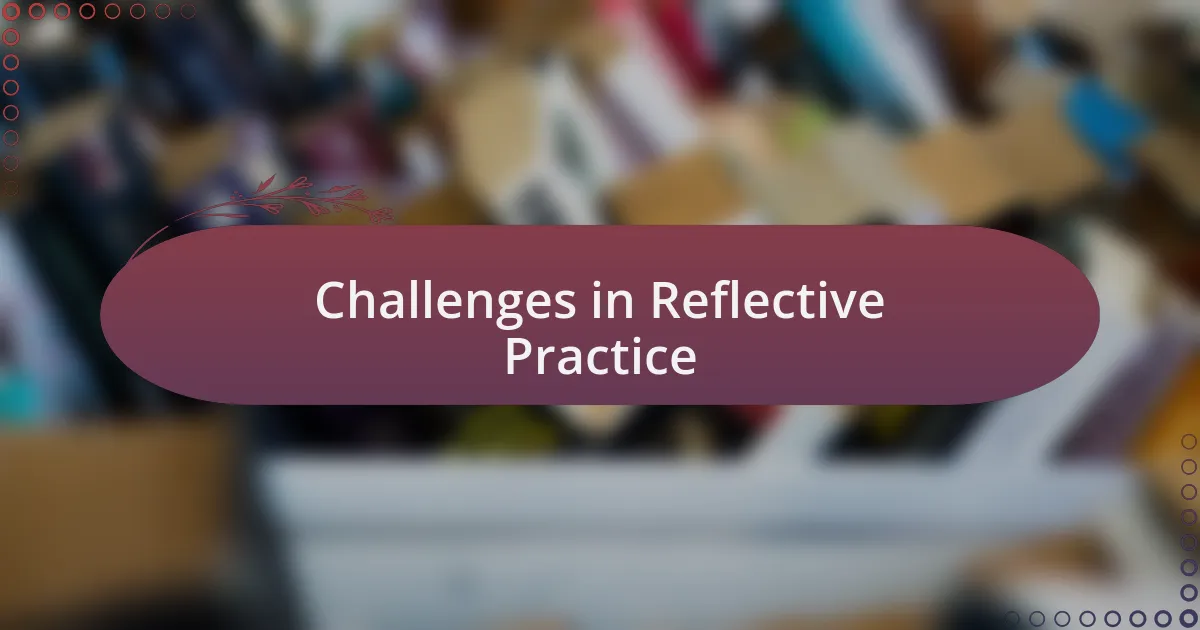
Challenges in Reflective Practice
Reflective practice is not without its hurdles. One challenge I often face is the overwhelming feeling of self-doubt that creeps in when evaluating my teaching. Reflecting on my sessions can sometimes lead me down a rabbit hole of negativity, where I question my capability as an educator. Have you ever felt that wave of uncertainty wash over you after a lesson? It can be tough to navigate, but recognizing this feeling is the first step to moving past it.
Another significant challenge is finding the time to reflect amid a packed schedule. There are days when I barely have a moment to catch my breath before jumping into the next lesson. I’ve learned that carving out even a few minutes at the end of the day can make a difference in how effectively I reflect on my experiences. Have you considered blocking time specifically for this purpose? It’s a small shift that can lead to meaningful insights.
Moreover, the quality of reflection can vary greatly depending on the context. There are moments when my reflections are rich and deep, while other times, they feel superficial and rushed. I recall a time I rushed through my reflections and missed crucial insights that could have shaped my practice. How do we ensure that our reflections are genuinely beneficial? I believe it requires patience and a commitment to really dive into our experiences rather than gloss over them.
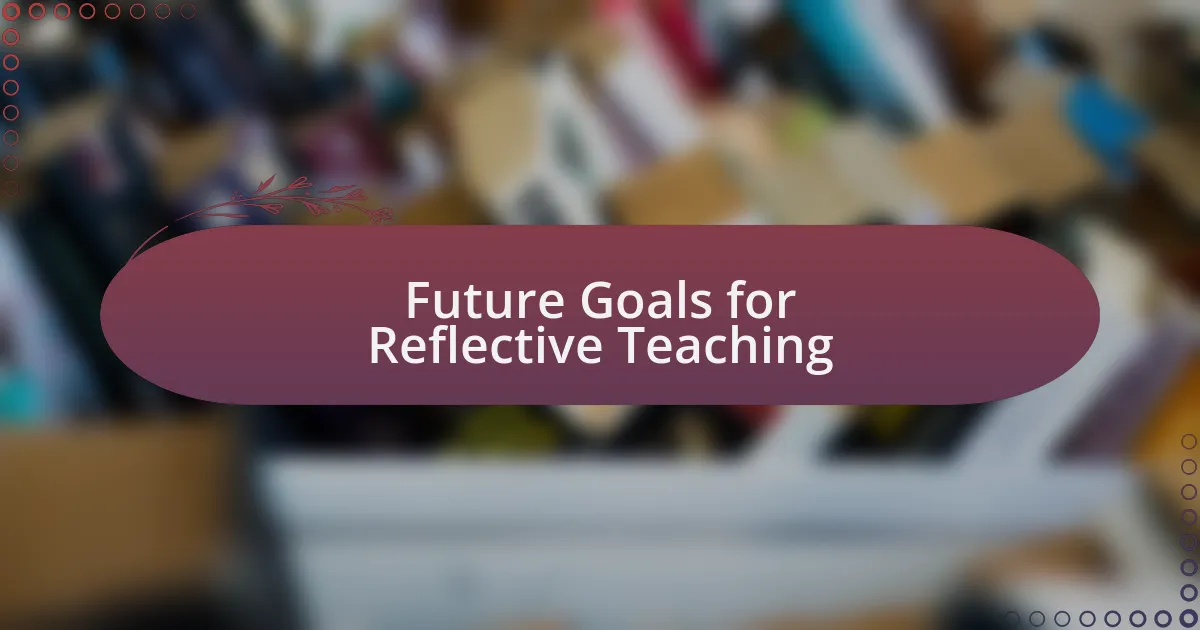
Future Goals for Reflective Teaching
When I think about the future of reflective teaching, my main goal is to deepen my practice through collaborative reflection with colleagues. I remember a time I sat down with a fellow teacher after a particularly challenging week. Our discussion opened my eyes to new perspectives, making me realize that sharing our experiences can lead to richer insights. How often do we take the time to learn from one another?
Another goal is to integrate more technology into my reflective practice. For instance, I’m exploring tools like online journals or video recordings of my lessons. I believe that capturing my teaching in action could provide invaluable evidence for self-assessment. Have you ever watched a recording of your teaching? It’s a revealing experience that can spark questions about my strategies and classroom dynamics.
Finally, I aspire to create a structured reflection framework that focuses on specific student outcomes. Recently, I did an experiment where I tied my reflections to student feedback. It was enlightening to see how my teaching impacted their learning. How can we not only reflect on our practices but also align them with our students’ needs? This future goal excites me, as it emphasizes the connection between reflection and improved student engagement.